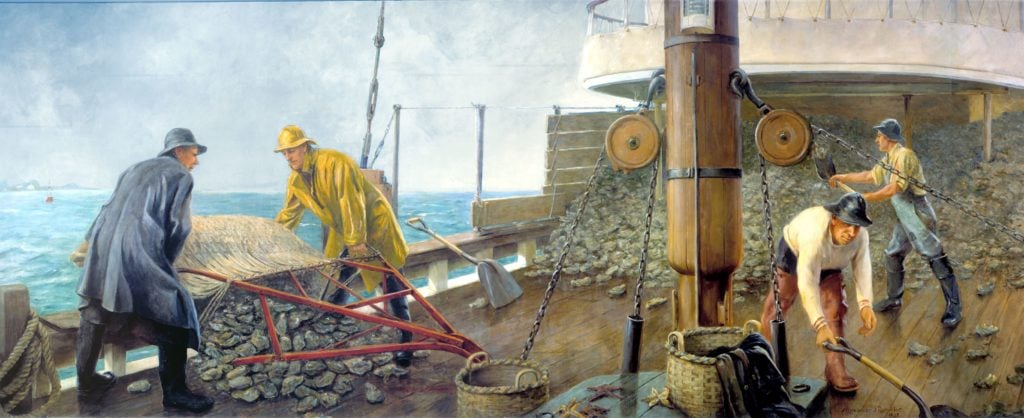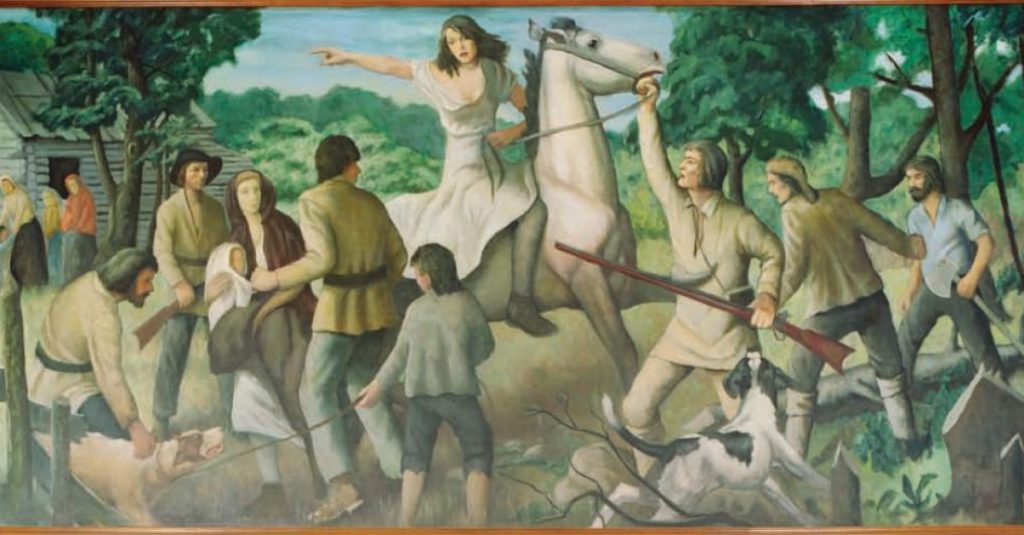Art World
A Treasure Hunt for Lost WPA Masterpieces
A federal agency's sleuthing has turned up hundreds of missing Depression-era works.

A federal agency's sleuthing has turned up hundreds of missing Depression-era works.

Sarah Cascone

Of the over 225,000 artworks produced under the Works Progress Administration Federal Art Project, many have been lost over the years, scattered to the winds. Now the government is making progress in its ongoing efforts to recover those missing pieces, reports NPR.
President Franklin Delano Roosevelt’s New Deal programs provided jobs to millions of Americans across a number of industries, employing farmers, construction workers, and even artists. In exchange for art, one could receive up to $42 a week, provided that the artist could prove her or his financial situation was sufficiently precarious.
While post offices and other public buildings are still graced with WPA-era murals, many of the other artworks commissioned by the program have since disappeared. The General Services Administration (GSA), the federal agency in charge of government buildings, is intent on hunting down lost government property, and in 2001 launched the WPA Art Recovery Project.
Few records were kept after the Depression, and WPA paintings have turned up in unlikely places including yard sales and flea markets. Artworks were sometimes given to museums or public agencies, but could just as easily be thrown out, relegated to storage, or sold as scrap. Paintings that decorated embassies and government offices were often taken by staffers, or presented as unofficial retirement gifts.

John Sloan, Fourteenth Street at Sixth Avenue, painted for the WPA. On loan to Detroit Institute of Arts.
Photo: courtesy of the US GSA Fine Arts Program
John Sloan‘s Fourteenth Street at Sixth Avenue, a New York City street scene, went missing after senator Royal Copeland’s death in 1938, and was not found until 2003. Valued at $750,000, it is now on loan to the Detroit Institute of Arts.
A seascape by Maine artist Andrew Winter titled Gulls at Monhegan made its way from the Costa Rican embassy to Portland, Maine, and is now headed to the U.S. Embassy in Croatia as part of the Art in Embassies program run by the State Department.

John W. Beauchamp, Rachel Silverthorne’s Ride in August 1778, mural done for the WPA in the Muncy Post Office, Lycoming County, Pennsylvania. Work of the United States Department of the Treasury, public domain.
The GSA has tracked down WPA artworks in private homes thanks to eBay sales and the popular Antiques Roadshow television program. Although the government is not actively hunting in the private sector, when it learns of the whereabouts of a WPA painting, it does follow up, asking the owner to return the piece to the government or to donate it to a public institution. Two hundred works have been recovered to date.
Not everyone believes that collectors of WPA art should feel compelled to return it. Artbusiness.com argues that “much of the WPA art currently in private hands was saved from destruction by knowledgeable art and antiques dealers and collectors as well as other alert citizens who recognized its historical significance early on,” and that the government should offer some incentive, like a tax break, to those who are turning over such art.

Anne Fletcher, Iris Garden, painted for the WPA.
Photo: courtesy of the US GSA Fine Arts Program.
Many paintings have found their way to museum collections over the years, which is fine by the GSA, as long as they have a record of the work’s location. One of the major components of the recovery project is compiling an inventory of WPA Artwork in Non-Federal Repositories.
Over 80 years after Roosevelt launched the New Deal, the WPA artworks offer a fascinating look at American life during the 1930s and 40s. Regardless of where the art is currently being held, such work is an important record of our national history and should be safeguarded.